
The Unseen Brighton exhibition can be viewed again throughout October and November 2024 on the second floor of Mithras House by the Hellerup staircase. Mithras House, Moulsecoomb Campus, University of Brighton, Lewes Road, Brighton BN2 4AT

The Unseen Brighton exhibition can be viewed again throughout October and November 2024 on the second floor of Mithras House by the Hellerup staircase. Mithras House, Moulsecoomb Campus, University of Brighton, Lewes Road, Brighton BN2 4AT

Frederick Henry Horatio Akbar Mahomed was born in Brighton and came from a family interested in health. His father Frederick Mahomed (1818–1888) ran a gym in Brighton. His grandfather was the Indian author Sake Dean Mahomed (1759–1851) who owned ‘Mahomed’s Baths’ on Brighton’s seafront. Sake Dean became known as ‘Dr Brighton’ and was appointed ‘Shampooing Surgeon’ to Kings George IV and William IV. Frederick was educated privately in Brighton before, at 18, studying at the Practical School of Medicine at the Royal Sussex County hospital in Kemptown. In line with contemporary medical training, he went on to complete his studies in London. Frederick studied at Guys’ hospital, London, where in 1871 he won the student Pupils’ Physical Society prize for his work on the sphygmograph.
At this time there was no such thing as the modern BP measuring machine widely used today. Frederick’s quantitative sphygmograph represented a scientific advance by dint of measuring the force of the pulse in numbers. He proved its clinical value by showing that raised blood pressure preceded kidney disease. This observation formed the foundation for treating high blood pressure to prevent damage to body organs such as the kidney. Mahomed published his research as ‘The physiology and clinical use of the sphygmograph’ in the Medical Times and Gazette, 2 (9 August 1873), pp. 141–143.
Frederick’s clinical and academic progression was rapid. He was appointed Member of the Royal College of Surgeons of England in 1872. The Royal College of Physicians of London appointed him Member in 1874 and Fellow in 1880. In 1875 he gained his Doctor of Medicine degree from the university of Brussels. He was awarded his Bachelor of Medicine degree from Cambridge University in 1881 for his thesis on ‘Chronic Bright’s disease without albuminuria’.
In 1877, Frederick returned to working at Guy’s Hospital. He died in 1884 from typhoid fever and is buried in Highgate cemetery.
Dr Max Cooper and Professor Mike Okorie
Stewart Cameron, Jackie Hicks, Gottschalk Carl, ‘Frederick Akbar Mahomed and his role in the description of hypertension at Guy’s Hospital’, Kidney International, Volume 49, Issue 5, May 1996, Pages 1488-1506
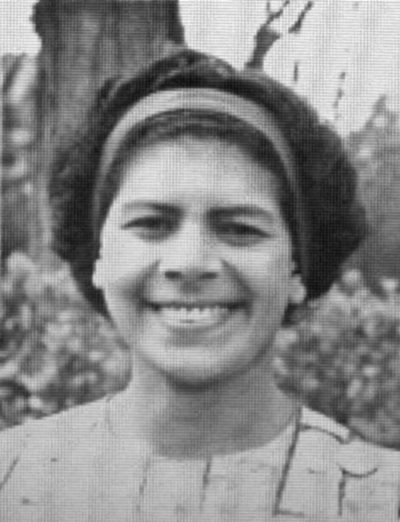
Ginette Lecordier Cabon was born in Mauritius, and worked as a senior school teacher before attending Chelsea College of Physical Education in Eastbourne in 1962. Ginette wanted to develop her knowledge of Physical Education, stating that she ‘needed to go through books for any teaching’ and that she was awaiting confirmation of a sabbatical from the government. Ginette received a scholarship for a total of £600, to attend the 9-month supplementary course, plus lodgings in Pevensey and, in 1962 Ginette left her husband and young family in Mauritius to begin her studies.
As an obituary in Le Mauricien on 26 March 2015 noted,
‘Ginette Lecordier Cabon will forever mark her era with her initiative to launch the drum majorette club in Mauritius at Queen Elizabeth College in 1973. A professor of physical education at the college, she launched the movement when she returned from France after having discovered the majorette there, drum and baton twirling. She was made a Member of the British Empire (MBE), a decoration she received in May 1989. Thanks to her work, the QEC cheerleaders, who were nicknamed the Silver Wands, were in demand everywhere. For 30 years, they have been invited to parade for National Day celebrations. They paraded at the 2nd Indian Ocean Islands Games and at the Commonwealth Games and also had the opportunity to participate in the baton twirling world championship held in Amsterdam, Holland.’
In a 1988 interview, Ginette Cabon stated of her pioneering contribution to the drum majorette in Mauritius that ‘I give to others what I have learned. Animating this discipline is voluntary work, because the rehearsals are done after school hours, or even on weekends when necessary. But I have a great passion for this activity.’
Veneta Roberts
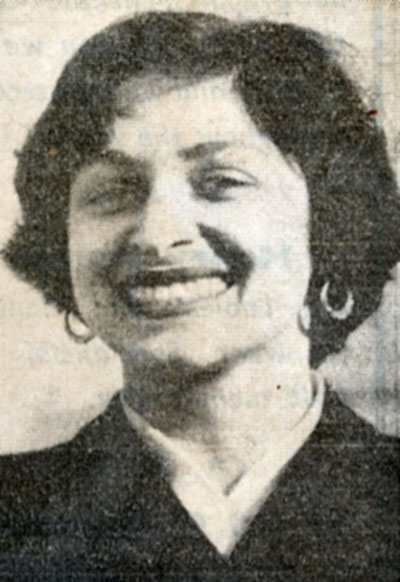
Kismet Shahani was born in India and came to live in England when she was two, living in Shoreham and then Hove before working as a model at Brighton School of Art after the Second World War.
Kismet Shahani married Roger Delgado (the actor who portrayed the first Master in Doctor Who (1963) in 1957. She was married to him for 16 years until his death in Turkey on 18 June 1973. She starred in several TV programmes including Dr Who, The Three Princes, and Dixon of Dock Green.
In 1983 she married the actor William Marlowe and they lived in or near Cardigan, South Wales until his passing in 2003.
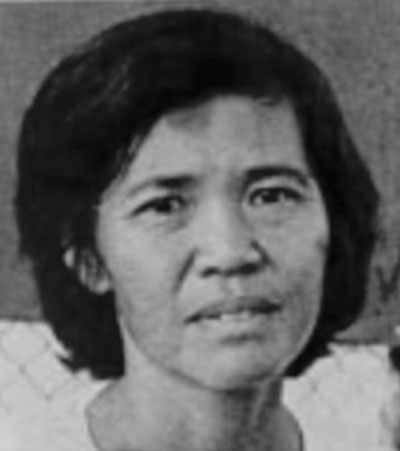
Born in Trinidad and Tobago in about 1940, Ria Mark – born Ria Chong Ashing – developed her love of lawn tennis growing up in the 1950s. After attending Chelsea College of Physical Education in Eastbourne from 1963-1966, she returned to Trinidad and Tobago to teach Physical Education at Bishop’s Anstey High School in Port-of-Spain. During the 1960s and 1970s, Ria Mark emerged as one of the most notable players in tennis in Trinidad and Tobago, and in 1987 was inducted into the Trinidad & Tobago Sports Hall of Fame. From the Pan Am Games to the Phillips Trophy win in the Bahamas in the 1970s, and having won every open tournament in Trinidad and Tobago, Ria Mark established an impressive local and international record as a tennis champion.
As Jelani Beckles noted in the Trinidad Guardian on 6 January 2016,
‘[Ria] Mark, known as the “Caribbean Queen of Tennis” passed away on October 21 [2015] at age 75. Mark was the national women’s singles champion on ten occasions during the 1960s and 1970s and medalled at the 1962 and 1968 Central American and Caribbean Games. Mark’s late husband Ken was also involved in local tennis, serving as a national team manager, event organiser and administrator. Mark had an impact on the lives of many girls as she taught Physical Education at Bishop’s Anstey High School in Port-of-Spain from 1966-2000 and taught tennis at St Augustine Girls’ High School. At her funeral service Mark was described as a dedicated mother, generous colleague and devoted worker.’
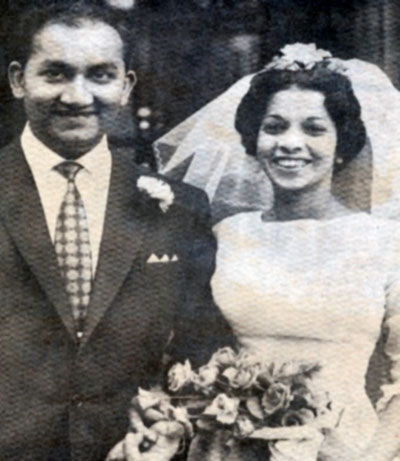
Born in the eastern region of Upper Guaico near the town of Sangre Grande in 1932 in colonial Trinidad, Boodhoo was the son of an estate labourer. Though of East Indian descent, the product of indentureship from South and East Asia to the colony after the abolition of slavery, he noted his name said something about ‘the whole history of colonialism. You have a Judaeo-Christian first name onto a British middle name, with a Hindu surname.’ But the cosmopolitan diversity was stimulating. As he remembered, ‘most of the children in the Roman Catholic school and in my village were of African origin. My best friends were of African origin, so going to fete and carnival and playing steelband was part of my growing up. The Hindu element was also very strong, as well as the Presbyterian, because I went to church every Sunday. That kind of mixture has enriched my life.’
At Naparima Training College in the 1950s, he was taught by the Trinidadian Muslim artist Mahmoud Pharouk Alladin (1919-1980), whose impressionist style of painting and themes of Trinidad folk culture influenced the young Boodhoo at a time of rising nationalism against British colonial domination. Alladin had been awarded a scholarship from the British Council to Birmingham College of Arts and Crafts, and then was employed as an Art Officer by the Ministry of Education and Culture during the period 1953-1956. He was responsible for overseeing Art Education work in all schools and teachers’ training colleges in Trinidad and Tobago, and had himself visited Brighton College of Art in 1953 (Brighton and Hove Herald, July 18th, 1953).
Boodhoo received a governmental scholarship in 1958 which allowed him to study art at Brighton College of Art; where he studied disciplined, formal techniques, and he earned a national diploma in design. As Bruce Paddington noted in Caribbean Beat (no. 6, 1993), ‘At the Brighton College of Art in England, Boodhoo learned the tools of his trade. His work was mainly representational and was frowned upon by his colleagues when he returned to Trinidad to teach: they expected him to embrace some new style. Gradually he moved towards abstraction and semi-abstraction.’ The Argus on 21 July 1962 noted Boodhoo had married Halima Khan, from British Guiana, a nurse at Sussex Throat and Ear Hospital and who had worked at Brighton General Hospital and Cuckfield Hospital, at Brighton Registry Office.
On 31 August 1962, Trinidad and Tobago became independent and Boodhoo returned home to teach. Studying abroad in Central Washington University and Indiana University in the 1960s and 1970s saw Boodhoo develop into one of the Caribbean’s leading art educationalists, an important oil painter with a political bent, and a novelist, author of Between Two Seasons (1994). In 2018, the Isaiah James Boodhoo Art Gallery opened at the Indian Caribbean Museum of Trinidad and Tobago in Carapichaima, opened by Halima Boodhoo, in tribute to his work, not least his art relating to life on Trinidad’s Caroni plains.
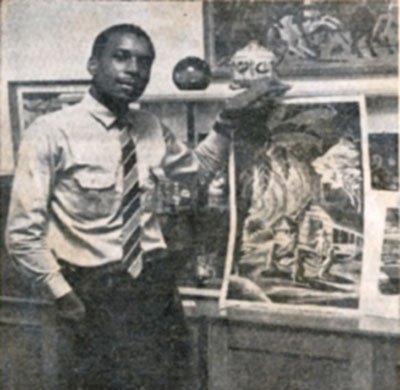
John Benjamin was born in Paraclete, St. Andrews, Grenada in 1934, and began painting from a young age, winning the Grenada Arts Festival silver cup from 1958 to 1961. In 1961-62 Benjamin was the first Grenadian to be awarded a Commonwealth scholarship bursary by the Ministry of Education to study art education at Brighton College of Art, becoming the first qualified art teacher in the Windward Isles. He was one of 200 teachers from twenty countries in the Commonwealth awarded a bursary.
While in Sussex, he hosted a one man exhibition at Hove Museum of paintings he had made previously and brought over with him, depicting life in Grenada in the West Indies and including ‘By the Light of the Tropical Moon’, ‘The Wonders of West Indian Evening’, ‘Unity is Strength on Santeurs Day’, ‘The Wonders of Light on Bathway Beach’, ‘They Dream Their Lives Away’, ‘That Golden Look on Marlie Hills’, ‘High Street in the Quaint Town of Santeurs’ and ‘Pageantry and Colour of a Market Day’ (Argus, 22 September 1961).
Benjamin returned to Grenada in 1962 where he taught art for many years in elementary and secondary schools. Benjamin also served as Supervisor of Art in the Ministry of Education. Internationally collected, Benjamin worked in both oil and watercolour. Also a poet and historian, Benjamin, won a BBC Prize in its First Caribbean Poetry Contest in 1980, and authored the 1991 book Short History of Grenada: New Dimensions. In 1992 Benjamin received an MBE (Member of the British Empire) for his contribution to the development of the visual arts in Grenada. After his passing in 2010, an eight-foot tall steel sculpture by Maria McClafferty titled Celebrating John Benjamin was installed at Grenada’s Maurice Bishop International Airport in 2014.
Eric Johnn, “Heeding the Mermaid’s Instructions,” Calabash: a Journal of Caribbean Arts and Letters 3, no. 2 (Fall-Winter 2005), https://doi.org/10.33682/ebj3-tzge
G.B.T.V. CultureShare ARCHIVES 1986: JOHN BENJAMIN M.B.E. “Documentary” – see the two part film below
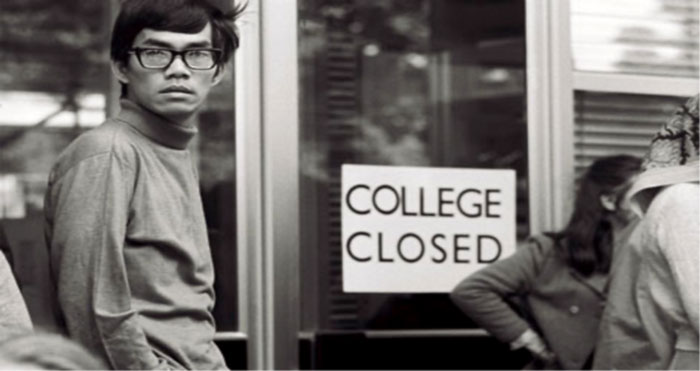
Brighton students had long organised themselves independently, and international students played their part in this. Harold Griffith (1921-2004) from Barbados was a cricketer who had played nine first-class matches for the Barbados cricket team from 1943 to 1947 and in 1952 while at Brighton Technical College was also elected Vice-President of Brighton Students’ Association (now Brighton Students’ Union) as well as impressing locals with his skills as a cricketer for the Brighton and Hove club (see Brighton and Hove Herald, 12 December 1952). Brighton Technical College became Brighton College of Technology which opened on the site of school playing fields in Lewes Road in 1963.
In June 1968, students at Brighton College of Arts protested over the lack of control they had over the curriculum and other matters as part of the year of international revolutionary upheaval underway, and for a week shut down the college.
In 1970, Brighton Polytechnic was formed after a merger of Brighton College of Arts with Brighton College of Technology, later also incorporating Chelsea College of Physical Education. The Brighton Poly Union Student Handbook 70/71 noted the existence of a Ceylon Students Association (for students from Sri Lanka), an Indian Students Association and an Islamic Society. Brighton Poly News Bulletin, no. 31 (December 1975) noted that in 1975/76 the number of overseas students was 725 and the number of nationalities represented was 75. ‘The largest group, 200, still comes from Malaysia but Iran (68) moved into second place.’ Along with many other polytechnics Brighton was granted university status in 1992.
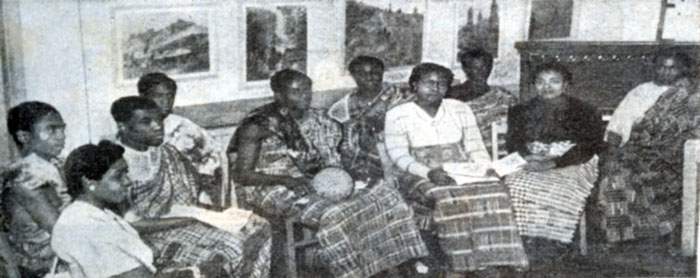
In 1859, Brighton School of Art opened with 110 pupils in two rooms off the kitchen of the Royal Pavilion. In 1877, this became Brighton School of Science and Art opened, based at Grand Parade. In 1897, it was renamed Municipal School of Art, later Brighton School of Art, while teaching begins at a new Municipal School of Science and Technology, home to 600 students, and in 1909 renamed the Brighton Municipal Training College.
During the First World War and Second World War, members of the armed forces undertook training at Brighton School of Art – these ranged from disabled soldiers based at Brighton Pavilion Hospital in 1917 to members of the US armed forces during the Second World War. When the British Empire was at the height of its power during the 1920s, Brighton School of Art students joined in with its associated propaganda efforts, for example playing a major role in Empire Week each year, with 70 of them participating in the pageant A Vision of Empire, which featured in the ‘Empire Dinner’ in Brighton Dome in 1925.
In 1934, E.A. Sallis Benney was appointed Principal of Brighton School of Art, and he envisioned Brighton becoming an international college of arts, going beyond borders, and international students soon established themselves as a presence. In January 1947, ‘Mr. Sallis Benney told the [Brighton and Hove Herald] that there is widespread conviction that when the world conditions become more stabilised the international reputation and influence of the college will be assured.’ In 1947, it was renamed Brighton College of Arts and Crafts and by now was one of the country’s leading centres of art. As the Evening News reported on 17 February 1947, ‘Brighton has become one of the most important art centres in the country. Students from all over the world, from South Africa and Holland and former underground workers in Norway, attend the already crowded College of Art’.
During the 1950s, Brighton became one of sixteen specialist centres for art teacher training in the country under leadership of Ronald Horton from 1944-1966, and students – including many international students – studied for an Art Teachers’ Certificate (ATC) at the Art Teacher Training Department. As Jonathan Woodham notes, ‘Students participated in a wide range of activities including oral history, theatre productions, music and written studies, all of them were acknowledged as part of the curriculum … ATC students … came from all over the world … including Africa, Ceylon, China, Cyprus, India, Pakistan and the West Indies, and significantly enriched the collective and individual experiences of the student body as a whole’.[1]
In 1949, Chelsea School, which had first opened in London in 1898 as an institution training women and girls in physical education, celebrated its fiftieth year by moving to Eastbourne, after being evacuated for a period in 1939 to Borth in Wales. The school became part of what was to become the University of Brighton in 1979, when the East Sussex College of Higher Education, which included what was now called Chelsea College of Physical Education, merged with Brighton Polytechnic.
[1] Jonathan M. Woodham, ‘Brighton School of Art: From Victorian origins to the 21st century’ in Philippa Lyon and Jonathan M. Woodham (eds.) Art and Design at Brighton, 1859-2009: From Arts and Manufactures to the Creative and Cultural Industries (Brighton, 2009), pp. 121, 125.
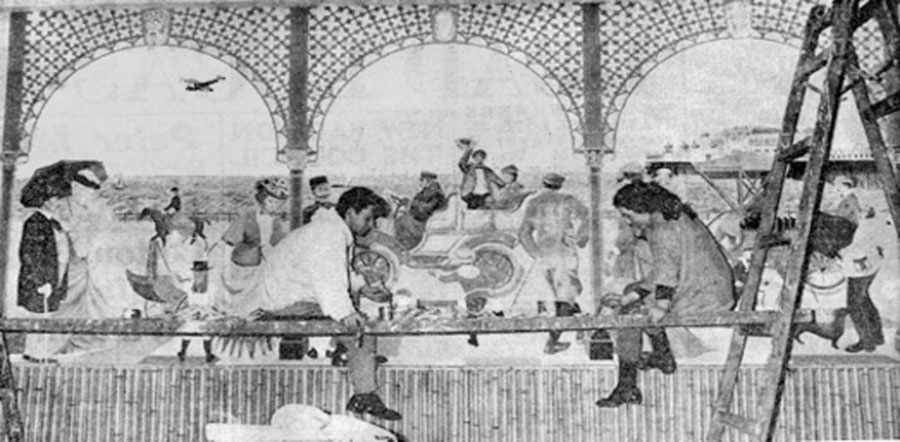
This collaborative archival project aims to recover the hidden presence and experience of Black and Asian people, as well as other racialised ethnic minorities – both staff and students – at the University of Brighton and its forerunner institutions including the Brighton School of Art and the Chelsea College of Physical Education (in Eastbourne). It was launched in 2022 to mark the 30th anniversary of the University of Brighton and is supported by the Centre for Memory, Narrative and Histories and the School of Humanities and Social Science at the University.
Unseen Brighton is a developing project. The initial project team (in alphabetical order) included Cathy Bergin, Thomas Carter, Marina Castledine, Max Cooper, Christian Høgsbjerg, Anthony Kalume, Deborah Madden, Mike Okorie, Ken Olende, Veneta Roberts, Anita Rupprecht and Isabella Tranter-Richards. We would also like to acknowledge the assistance of the many archivists and others who have helped facilitate this research including Sarah Smith and Lesley Whitworth and other archivists in the Brighton School of Art Archive, University of Brighton Design Archives.
Please contact us either individually or on unseen@brighton.ac.uk if you have further questions or for more information on the project and how you can get involved.